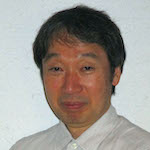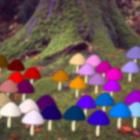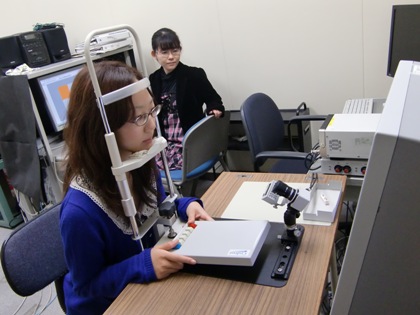Profile

- Research Subject
Color vision, Perception, Visual memory
- Research Fields
- Cognitive psychology, Color science
- Faculty - Division / Research Group / Laboratory
- Division of Human Sciences / Research Group of Psychology / Laboratory of Psychology
- Graduate School - Division / Department / Laboratory
- Division of Human Sciences / Department of Psychology / Laboratory of Psychology
- School - Course / Laboratory
- Division of Humanities and Human Sciences / Course of Human Sciences / Laboratory of Psychology
- Contact
Office/Lab: E101
TEL: +81-11-706-4014
FAX: +81-11-706-4014
Email: kawabata(at)let.hokudai.ac.jp
Replace “(at)” with “@” when sending email.Foreign exchange students who want to be research students (including Japanese residents) should apply for the designated period in accordance with the “Research Student Application Guidelines”. Even if you send an email directly to the staff, there is no reply.- Related Links
Lab.letters


Literary figuration, or reality?
Test different perspectives.
The ability to see things is synonymous with the ability to realize the world. In addition to an innate cognitive system, one’s cognitive ability improves as one grows, depending on environment and experience. It’s often said that some people see things differently, but I wonder if people can perceive the same subject as being different depending on their capacity to realize things. To elucidate this, my laboratory has been focusing on research into colors and visual scenes in connection with daily activities. Students in my laboratory, some of whom have transferred in from other universities, lead full research lives, while trying to acquire professional qualifications out of an interest in color.
Clarify the flexibility of the brain through experiments:
Advise on the effective formulation of experimental methods.
On one particular occasion, when I was climbing in the Himalayas with a friend who had anomalous color perception, I realized he was consistently able to see farther than I could. An examination after returning to Japan identified him as a person with excellent visual acuity. Presumably, this is because the brain flexibly reallocated brain resources unnecessary for color processing to those for acuity. To objectively and logically elucidate such a question, we adopt the method of experimentation. In what settings does one carry out experiments? What kind of subjects do you recruit? What do you want them to do? Devising experimental methods is vital to the success of your research. I hope I can offer sound advice on effective experimental methods so that I don’t mar the charm of the research themes students have set.
Message
As you gain experience and spend time in specific environments, your cognitive capacity will invariably change. We often hear the phrases “have good judgement” or “have an eye for beauty” used to describe specialists such as art connoisseurs and experts in picking edible wild plants (or anyone with a good sense of color coordination for clothing or an advanced player of computer games), the capacity to precisely evaluate something is clearly enhanced in proportion to the experience gained. Colors are likely to have a lot to do with the familiarization of seeing something. We are currently collecting various experimental data on scene recognition memory of drawing experts; individual differences in color discernability—women are adept at discerning soft red, yellow and violet; unconscious daily experiences and learning are conducive to enhancing color discernability; color discernability by winter mountain climbers and experts in picking edible wild plants; and scene identification by photographers.
Why am I so particular about colors? I enjoyed climbing mountains in Hokkaido during my school days and lived for a while in the mountainous areas of central Asia where the air is dry and clear, which may have led to the beginning of my deep interest in colors. I was surprised to learn that locals have such keen eyesight that they can perceive detailed conditions several kilometers away. What systems in the brain enable them to see things at high resolution? Does their acute eyesight have something to do with large numbers of locals suffering from impaired color perception? These questions triggered the launch of my research. I would like to clarify how wonderful the ability to see things is by using colors as a comprehensible instrumental tool. Towns and streets are teeming with posters and flyers while the world of the Internet is filled with various designs. Among them, some seem to strike a chord when we see them. Why is that? Let’s think about the reason for this from a scientific perspective!




